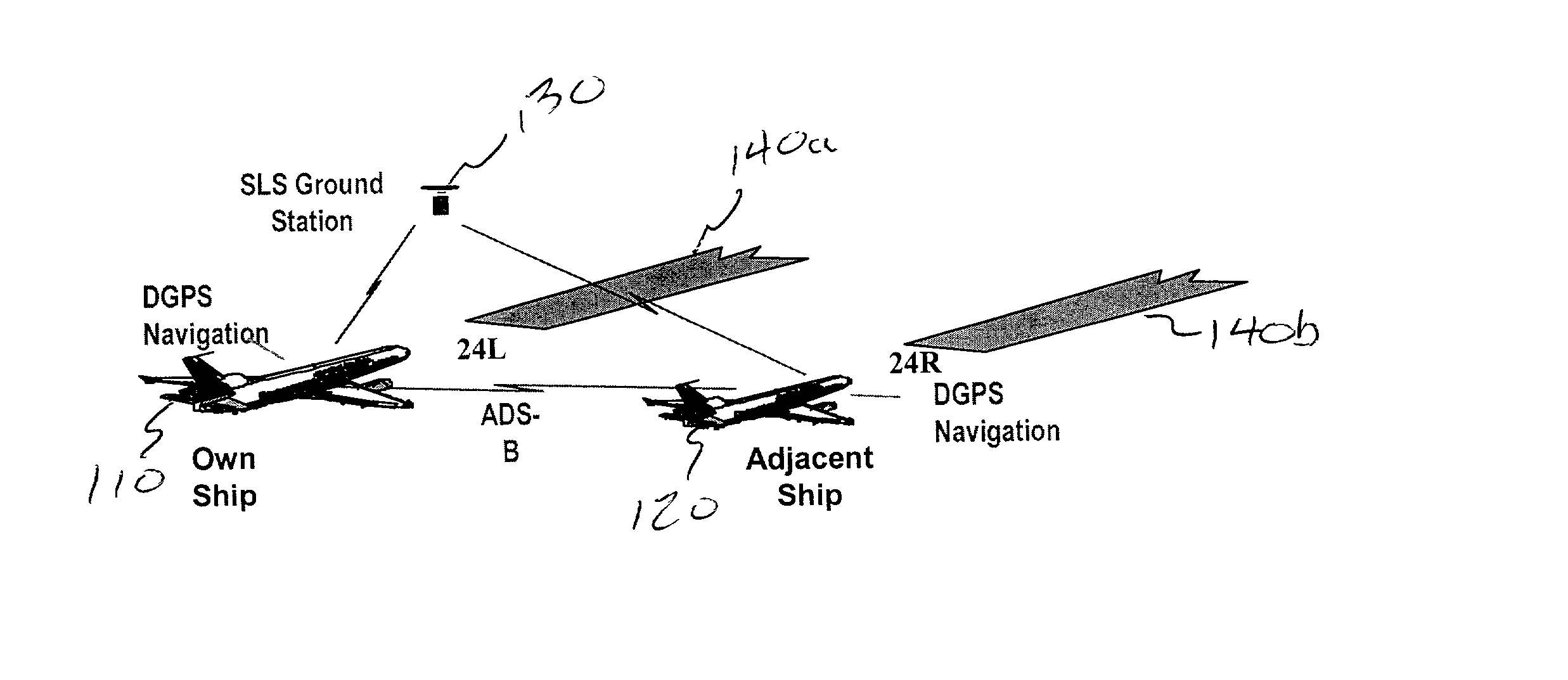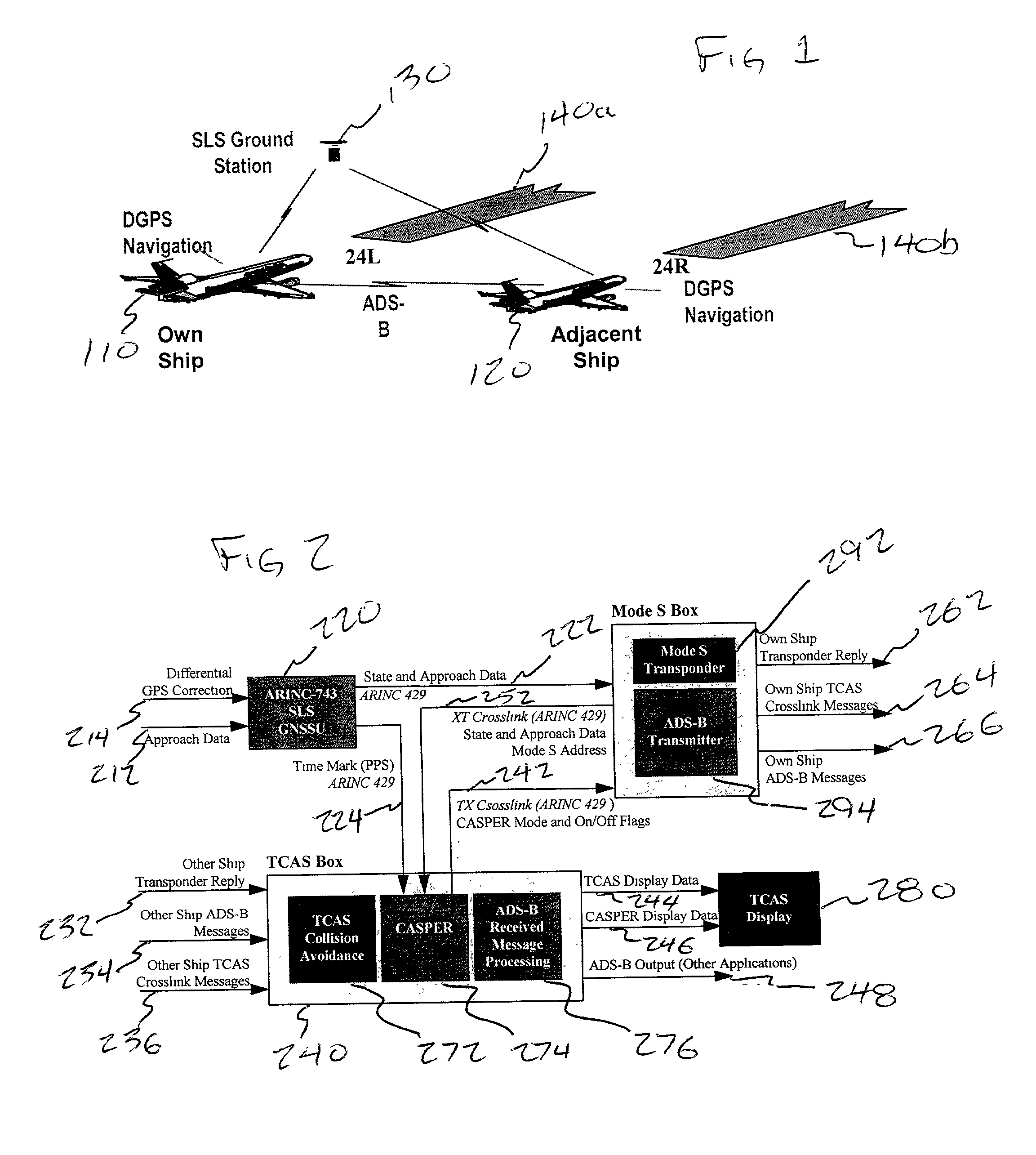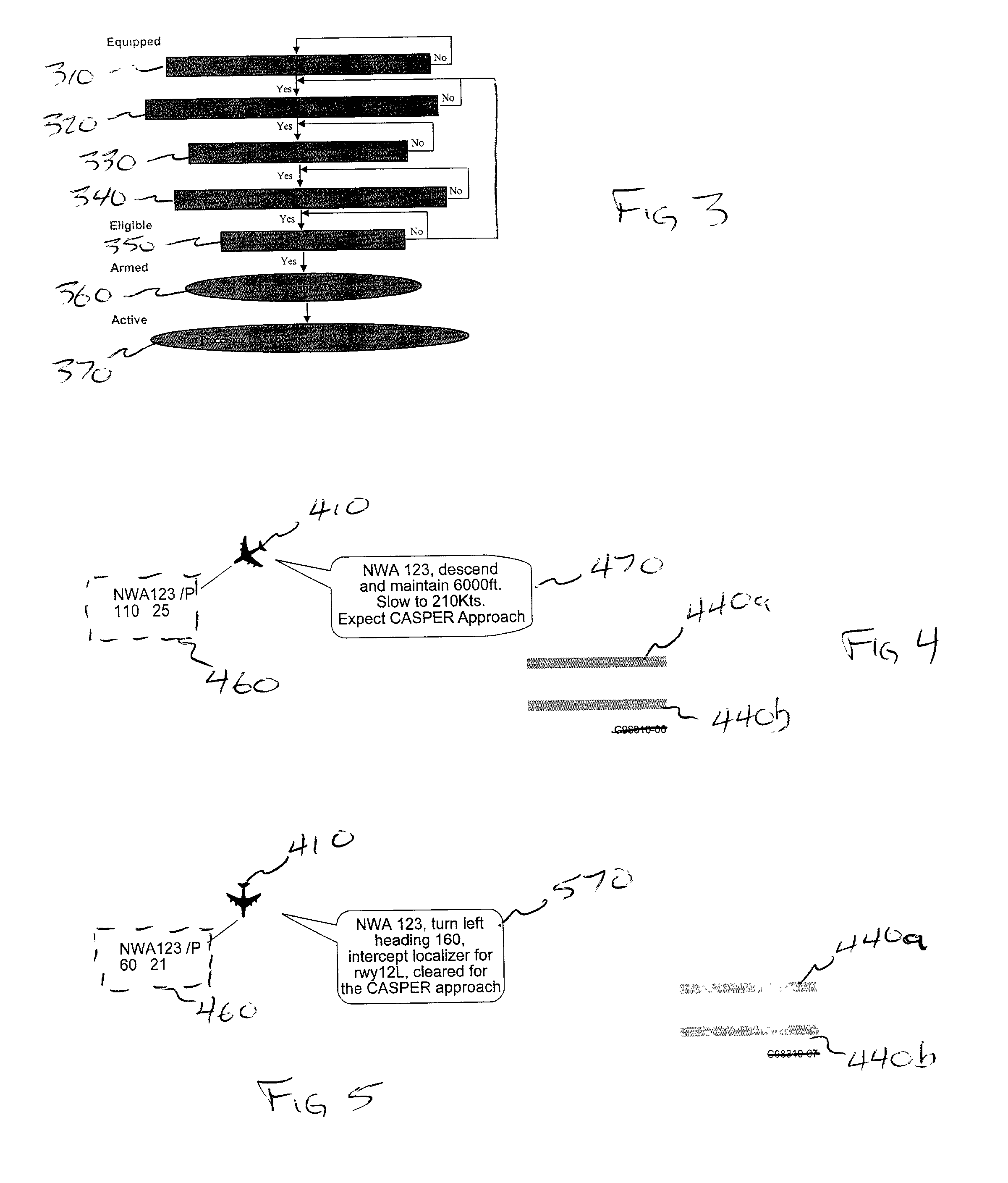Airborne alerting system
a technology of airborne alerting and radar, which is applied in the direction of instruments, analogue processes, and specific applications using reradiation. it can solve the problems of airports not always affording the luxury of runway spacing, airports experiencing increasing amounts of air traffic, and feet apart suffering a serious reduction in capacity
- Summary
- Abstract
- Description
- Claims
- Application Information
AI Technical Summary
Benefits of technology
Problems solved by technology
Method used
Image
Examples
Embodiment Construction
[0029] In the following detailed description, reference is made to the accompanying drawings which form a part hereof, and in which is shown by way of illustration specific embodiments in which the invention may be practiced. These embodiments are described in sufficient detail to enable those skilled in the art to practice the invention, and it is to be understood that other embodiments may be utilized and that structural, logical and electrical changes may be made without departing from the spirit and scope of the invention. The following detailed description is, therefore, not to be taken in a limiting sense, and the scope of the invention is defined by the appended claims. Like numbers in the figures refer to like components, which should be apparent from the context of use.
[0030] In the following description, the terms own ship (or aircraft), other ship (or aircraft) and adjacent ship (or aircraft) will be used. Own ship refers to the aircraft from which a frame of reference is...
PUM
 Login to View More
Login to View More Abstract
Description
Claims
Application Information
 Login to View More
Login to View More - R&D
- Intellectual Property
- Life Sciences
- Materials
- Tech Scout
- Unparalleled Data Quality
- Higher Quality Content
- 60% Fewer Hallucinations
Browse by: Latest US Patents, China's latest patents, Technical Efficacy Thesaurus, Application Domain, Technology Topic, Popular Technical Reports.
© 2025 PatSnap. All rights reserved.Legal|Privacy policy|Modern Slavery Act Transparency Statement|Sitemap|About US| Contact US: help@patsnap.com



